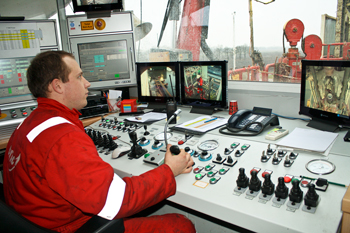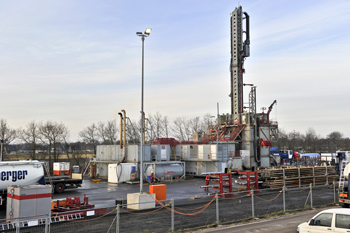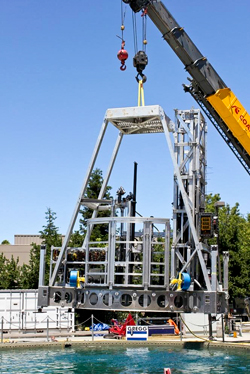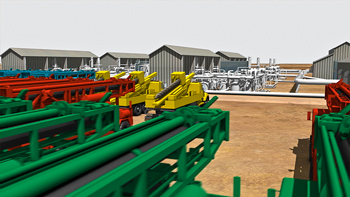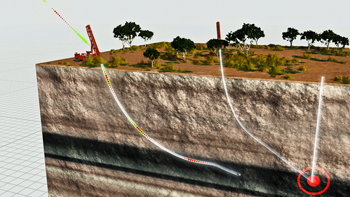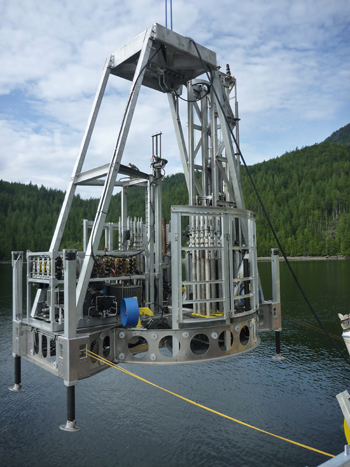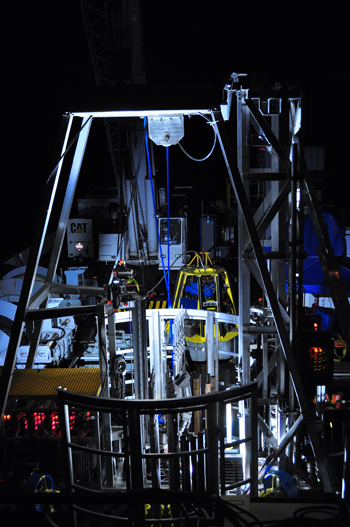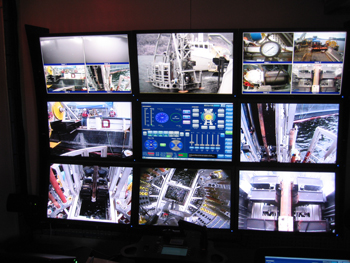Drilling advances
With automation, the rig floor enters the digital age
Vol. 232 No. 8
Over the years, advances in automation and telecommunications have combined to transition the rig floor gradually from a grimy, hazard-filled workplace to a high-tech manufacturing laboratory. From the debut of the iron roughneck to automated onshore monitoring of critical well parameters from remote locations, traditional drilling methods are finding themselves dispatched to the archives, right alongside fishtail bits. Further evidence of that steady transformation was presented over the past month when Schilling Robotics and Royal Dutch Shell detailed separate projects that, if successful, could even make the conventional rig floor a relic of “how we used to drill wells back in the old days.” Following successful factory acceptance testing, Schilling Robotics announced plans to launch a field test of a deepwater robotic subsea drilling rig offshore Vancouver, British Columbia. The brainchild of fellow California company Gregg Drilling and Testing, the automated Seafloor Drill is described as a viable alternative to conventional geotechnical drillships. Marl Technologies of Edmonton, Alberta, is designing and constructing the drilling platform.
Meanwhile, in a media briefing in Houston, Shell’s Peter Sharpe, executive vice president of wells, provided details on the fully automated Well Manufacturing System (WMS), which the operator is developing with China National Petroleum Corp. (CNPC). Engineered for multi-well onshore projects, the system is expected to be in use by 2013, with equipment manufacturing set to begin next year. Sharpe explained that WSM is earmarked for large-scale drilling projects and designed to construct and complete wells in a standardized and repeatable method. One of the key components will be Shell’s SCADAdrill software, which essentially replaces conventional rigsite activities that rely on manual controls. For instance, the software sets and controls the trajectory, basically eliminating the need for an onsite directional driller. Once incorporated into WSM, SCADAdrill also will be able to monitor mud properties and automatically make any necessary treatments, thereby taking the wellsite drilling fluid engineer out of the equation. The software has already been incorporated successfully into rig operations and field tested in the Netherlands and the Marcellus and Haynesville shales. WMS will rely on highly automated truck-mounted rigs, with a first rig drilling a series of top holes, followed by a second that would drill the intermediate sections and a third to install the tubing and otherwise complete the well (see figure). Sharpe emphasized that once WMS is up and running, it will be highly dependent on economies of scale. “Obviously, this system would not be economical for 10 or 20 wells,” he said, adding that Shell plans to drill upward of 30,000 unconventional onshore wells by the end of the decade. For projects requiring many wells in a given location, he said, WSM will be “safer, faster and less expensive” than the conventional approach. For example, he said the soft-torque rotary system incorporated into the SCADAdrill software reduces vibration, which delivers faster drilling rates, less bit wear and fewer bit trips. While WMS is under development, Gregg Drilling and Testing says a successful shakeout cruise of its Seafloor Drill could revolutionize deepwater geotechnical studies. As designed, the technology is not geared to drill a new well, but will be used primarily for geotechnical surveying and core sampling. However, Gregg says the inherent design flexibility will allow downhole tool replacement for additional activities. For instance, the company was awarded a license from Williamson Technologies, giving it access to patented wireline technology that will allow the drill head to be switched out for cone penetration testing to determine strength parameters in soft soils. “The design and durability of this platform will save companies on cost, increase accuracy and offer a positive environmental impact,” John Gregg, the company’s president, stated in a release. As designed, the system is rated to just over 9,800-ft water depths. For the field trial, initial tooling makes it capable of drilling up to 500 ft under the seabed. Gregg said additional tooling could increase the drilling depth capabilities. While no one expects your local drilling contractor or Ralph Roustabout to find their services obsolete anytime soon, one thing is abundantly clear: This ain’t your daddy’s oil field anymore.
|
- Coiled tubing drilling’s role in the energy transition (March 2024)
- Using data to create new completion efficiencies (February 2024)
- Digital tool kit enhances real-time decision-making to improve drilling efficiency and performance (February 2024)
- E&P outside the U.S. maintains a disciplined pace (February 2024)
- Prices and governmental policies combine to stymie Canadian upstream growth (February 2024)
- U.S. operators reduce activity as crude prices plunge (February 2024)



